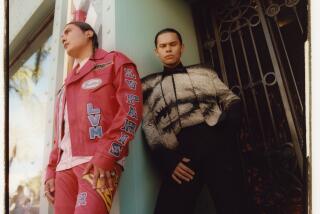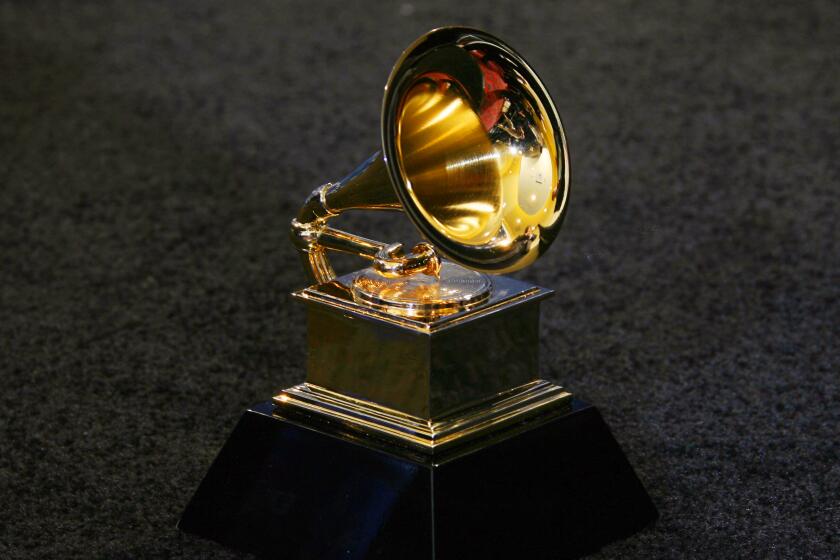Favoring Film Over Bullets, Teens Show a Dead Aim for Grittiness
- Share via
The images were stark: black-and-white representations of the grittier parts of being a teen in Los Angeles. Their subjects were disturbing: One focused on the forearm of a teenage cutter; another showed the gravestone of a boy who died days before his 18th birthday.
At a gallery on Olvera Street, between souvenir vendors and Mexican restaurants, a group of local teenage photographers gathered to celebrate their first gallery show and discuss how their art had allowed them to represent what mattered in their lives.
The exhibit, “Shoot Cameras, Not Guns,” was organized by Gina Brownstein, a photography teacher at Morningside High School in Inglewood, and sponsored by Five 4 Five, an educational nonprofit organization that helps ambitious, at-risk young people. Five 4 Five was started by Brownstein and her mother, Mary Ann Maggiore.
Last year, one of Brownstein’s students, Humberto Gomez, was killed in what she described as a gang incident on the same night he won a state award for his photography. In an introduction to the exhibit, Maggiore and Brownstein wrote that they “felt we had to act as well as grieve.”
They founded Shoot Cameras, Not Guns in honor of Gomez.
More than 50 local teenagers sent in photos for the project; 23 were chosen to be represented on the gallery walls and to have their works published in a magazine. Both the exhibition and the magazine were assembled by students, Brownstein said.
At El Pueblo Gallery, the black-framed photographs are organized by theme -- death, violence, self-image, family, drugs -- and accompanied by short essays from the photographers. They will be on display through July 30.
Ashley Bliss, a senior at La Serna High School in Whittier, said she used a whole roll of film to get the perfect shot: a teenage girl’s hand next to an upended prescription bottle. “Drugs are daunting,” she wrote. “You cannot control their effects on the body and mind.”
Ashley’s teacher, Amber Arseneau, said the image had come from a class project dedicated to teen issues. Among the works of 150 students who participated, Ashley’s was one of the best, Arseneau said.
As invited guests, curious tourists and art aficionados roamed the gallery, photographer Marcus Harrington, 18, marveled at how strange it felt to see his work on the wall, framed and matted. His image, a tight shot of a man offering a joint, was posed, he said.
In the accompanying essay, Marcus, a senior at Morningside, wrote that he wanted to capture “that hot spiky feeling that you get when someone approaches you with something you know is wrong.”
Maggiore said the exhibit provided teenagers an opportunity to say whatever they wanted to the world about their lives. “I’m amazed at the energy, the power of it,” she said.
Donald Wylie had read about the exhibit in L.A. Weekly, and Saturday he took the Gold Line from South Pasadena to see the teenagers’ work. He had qualified praise for the photographers and their images.
“It’s interesting,” he said, though he added that he wished there were more solutions offered to the problems facing teenagers.
“Kids have a hard time expressing anything,” he added. “This is an outlet.”
More to Read
The biggest entertainment stories
Get our big stories about Hollywood, film, television, music, arts, culture and more right in your inbox as soon as they publish.
You may occasionally receive promotional content from the Los Angeles Times.










